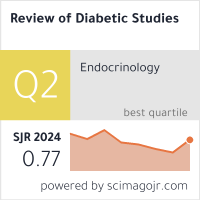The Contribution Of Pharmacists To Antibiotic Stewardship In Dental Practice: A Systematic Review
DOI:
https://doi.org/10.70082/c84q3h57Abstract
Background: Dental practice is a significant source of outpatient antibiotic prescriptions, contributing substantially to the global challenge of antimicrobial resistance (AMR). A considerable proportion of these prescriptions are inconsistent with evidence-based guidelines. Pharmacist-led antimicrobial stewardship (AMS) programs have demonstrated efficacy in other healthcare settings, but their specific contribution within dentistry is less synthesized. This systematic review aims to evaluate the role, interventions, and impact of pharmacists in promoting appropriate antibiotic use in dental practice.
Objectives: To systematically review and synthesize the available evidence regarding the role and effectiveness of pharmacists and pharmacist-led interventions in dental antibiotic stewardship.
Methods: A systematic search of electronic databases was conducted to identify studies evaluating pharmacist-led AMS interventions in dental settings. The review included randomized controlled trials (RCTs), non-randomized controlled trials, and observational studies. Data on study design, intervention components, and outcomes related to antibiotic prescribing were extracted and synthesized narratively. The methodological quality of included studies was assessed using the Cochrane Risk of Bias 2 (RoB 2) tool for RCTs and the Newcastle-Ottawa Scale (NOS) for observational studies.
Key Findings: The evidence consistently demonstrates that pharmacist-led interventions are highly effective in improving antibiotic prescribing in dentistry. These interventions, which include educational outreach, academic detailing, audit and feedback, and collaborative guideline development, have been shown to reduce inappropriate antibiotic prescribing by approximately 70%. Pharmacists contribute essential expertise in pharmacotherapy, antibiotic spectra, and resistance patterns, filling a critical knowledge gap for many dental practitioners. Successful programs are characterized by interprofessional collaboration, institutional commitment, and data-driven feedback mechanisms. However, significant systemic barriers, including professional siloing, inadequate communication channels, educational deficiencies in dental curricula, and a lack of integrated health information systems, hinder the widespread implementation of these effective collaborations.
Conclusions: There is compelling evidence that pharmacists are a critical and currently underutilized resource in advancing antibiotic stewardship in dental practice. Their involvement leads to substantial and clinically meaningful improvements in prescribing appropriateness. To fully realize this potential, systemic changes are required, including the integration of interprofessional AMS education into dental and pharmacy curricula, the development of supportive health policies and reimbursement models, and the adoption of technologies that facilitate seamless collaboration.
Downloads
Published
Issue
Section
License

This work is licensed under a Creative Commons Attribution-ShareAlike 4.0 International License.


